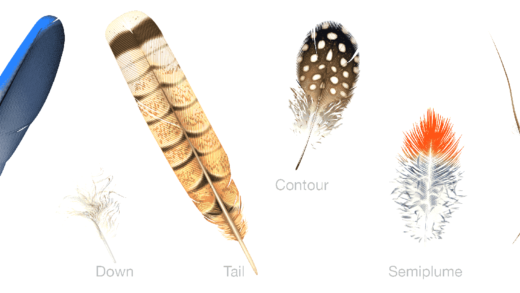Lowering your car enhances aesthetics and performance but comes with risks like alignment issues, reduced clearance, and potential warranty voids. Post-lowering maintenance is crucial for safety and performance.
Tools You’ll Need: Best Tools for Lowering a Car
Car lowering is a popular modification that enhances the look and performance of your vehicle. To start this project, you need the right tools for lowering a car effectively and safely. Here’s a list of essential tools you’ll require:
- Jack and Jack Stands: A reliable hydraulic jack is crucial for lifting your car. Jack stands will ensure your vehicle is stable while you work.
- Socket Set: A complete socket set will help you remove and install bolts quickly. Look for a set that includes various sizes to accommodate different parts.
- Torque Wrench: This tool ensures that bolts are tightened to the manufacturer’s specifications, preventing issues like stripped threads.
- Spring Compressors: If you’re installing lowering springs, spring compressors are necessary for safely compressing the springs during removal and installation.
- Wrenches: Adjustable wrenches or a set of combination wrenches are useful for loosening and tightening various components.
- Measuring Tape: To ensure your car is lowered to the desired height, a measuring tape is essential for precise measurements.
Before starting your project, gather all these tools to make the process smoother and more efficient. Having the right tools not only speeds up the lowering process but also ensures that you perform the task safely and correctly.
Different Methods: Exploring Various Ways to Lower Your Car
Lowering a car can be achieved through several methods, each with its own benefits and drawbacks. Here’s a breakdown of the most popular techniques for lowering a car:
- Lowering Springs: This method involves replacing your factory springs with shorter, stiffer lowering springs. It’s a cost-effective way to achieve a lower stance while improving handling.
- Coilovers: Coilover kits allow for adjustable ride height and are popular among car enthusiasts. They provide the flexibility to customize your car’s height and can significantly enhance handling.
- Air Suspension: This method uses air bags instead of traditional springs. It offers adjustable ride height at the push of a button, providing both comfort and performance.
- Cutting Springs: Some choose to cut their stock springs to lower their car. However, this method is not recommended due to safety concerns and potential ride quality issues.
Each method has its pros and cons. Consider factors like budget, intended use, and desired ride quality when choosing how to lower your car.
Choosing the Right Springs: How to Pick Lowering Springs for Your Vehicle
When selecting lowering springs, it’s crucial to choose the right ones for your specific vehicle model. Here are some key points to consider:
- Spring Rate: Different springs have varying stiffness levels. Choose a spring rate that matches your driving style—stiffer springs improve handling but can lead to a harsher ride.
- Drop Height: Determine how low you want to lower your car. Springs typically offer a drop ranging from 1 to 3 inches. Ensure it aligns with your aesthetic and performance goals.
- Brand Reputation: Opt for reputable brands known for quality and reliability. Research customer reviews and experiences to make an informed decision.
- Compatibility: Ensure that the springs are compatible with your vehicle’s make and model. Mismatched springs can lead to poor performance and safety hazards.
Choosing the right lowering springs is critical for achieving the desired look and performance. Take your time to research and select springs that suit your needs.
Installation Guide: Proper Way to Install Lowering Springs
Installing lowering springs is a pivotal step in the car lowering process. This method not only enhances the look of your vehicle but also improves handling. Here’s a step-by-step guide to ensure a smooth installation:
- Preparation: Start by parking your car on a level surface and engaging the parking brake. Gather all your tools and lowering springs.
- Lift the Vehicle: Use a hydraulic jack to lift the car, placing jack stands under the vehicle to ensure stability. Never work under a car supported only by a jack.
- Remove the Wheels: Use a socket set to remove the lug nuts and take off the wheels. This will give you access to the suspension components.
- Disconnect the Suspension: Depending on your vehicle, you may need to remove the strut assembly. Use a torque wrench to loosen bolts and disconnect any components attached to the strut.
- Compress the Springs: Attach spring compressors to the factory springs to safely compress them. This is crucial for removing the springs without causing injury.
- Remove the Old Springs: Carefully remove the old springs from the strut assembly after ensuring they are fully compressed.
- Install the New Lowering Springs: Place the new lowering springs onto the strut assembly. Make sure they are seated correctly.
- Reassemble the Suspension: Reattach the strut assembly to the vehicle. Ensure all bolts are tightened to the manufacturer’s specifications using the torque wrench.
- Reinstall the Wheels: Put the wheels back on and hand-tighten the lug nuts before lowering the car back to the ground.
- Final Checks: Once the car is back on the ground, use the torque wrench to tighten the lug nuts fully. Double-check all suspension components to ensure everything is secure.
Following these steps will help you install lowering springs correctly, improving your vehicle’s stance and handling.
DIY vs Professional: Do You Need a Pro to Lower Your Car?
Deciding whether to lower your car yourself or hire a professional can be daunting. Here are some considerations to help you make that choice:
- Experience Level: If you have prior experience with car modifications, you might feel confident enough to tackle the project. However, if you’re a novice, hiring a professional might be wise.
- Tools Availability: Ensure you have all the necessary tools before starting. If not, consider the cost of purchasing or renting tools versus paying a professional.
- Time Commitment: Lowering a car can take several hours, especially if it’s your first time. If you’re short on time, a pro can complete the job more efficiently.
- Quality Assurance: Professionals have experience and know-how to perform the job correctly. They can also ensure that the installation meets safety standards.
- Cost Considerations: Weigh the cost of professional installation against potential mistakes you might make if you try it yourself. Sometimes, saving money now could lead to more expenses later if done incorrectly.
Ultimately, the decision should be based on your comfort level and resources. If in doubt, consult a professional to avoid potential issues.
Handling and Ride Quality: Effects of Lowering Your Car
Lowering your car can significantly affect handling and ride quality. Here’s what to expect:
- Improved Handling: Lowering your car lowers its center of gravity, which can enhance cornering stability. You’ll likely notice better responsiveness during turns.
- Ride Quality Changes: While some drivers appreciate the sportier feel of a lowered vehicle, others may find the ride stiffer. Lowering springs often provide less cushioning, leading to a harsher ride on uneven surfaces.
- Increased Tire Wear: A lowered car may cause uneven tire wear if alignment is not correctly adjusted after installation. Regular checks can help mitigate this issue.
- Potential for Bottoming Out: Lowering can increase the risk of bottoming out on bumps or potholes. Be cautious when navigating rough roads.
Understanding these effects can help you adjust your driving style and expectations after lowering your car.
Risks of Incorrect Lowering: What Can Go Wrong?
Lowering your car can enhance its aesthetics and performance, but incorrect lowering can lead to several issues. Here are some potential risks:
- Alignment Problems: Incorrectly lowering your vehicle may cause misalignment, leading to uneven tire wear and compromised handling.
- Reduced Ground Clearance: Lowering too much can result in scraping against speed bumps, potholes, or driveways, which can damage the undercarriage.
- Suspension Damage: Using inappropriate springs or cutting them can lead to suspension failure, impacting ride quality and safety.
- Increased Risk of Bottoming Out: A lowered car may bottom out more easily on uneven surfaces, potentially causing significant damage to components.
- Legal Issues: Some regions have regulations regarding vehicle height. Lowering your car too much can lead to fines or issues during inspections.
Understanding these risks is crucial for anyone considering lowering their car. Proper research and adherence to manufacturer specifications can mitigate these issues.
Safety First: Ensuring Your Car Remains Safe After Lowering
After lowering your car, it’s essential to ensure it remains safe to drive. Here are some key safety checks:
- Check Alignment: Always have your car’s alignment checked after lowering. Proper alignment helps prevent uneven tire wear and improves handling.
- Inspect Suspension Components: Regularly inspect your suspension components for wear and tear. Look for signs of damage that could affect performance.
- Monitor Tire Pressure: Lowering your car can change how the tires make contact with the road. Keep an eye on tire pressure and tread wear.
- Test Driving Dynamics: Pay attention to how your car handles after lowering. If you notice any unusual noises or handling issues, consult a professional.
- Ensure Proper Lighting: Lowering can affect headlight alignment. Make sure your headlights are properly aimed to maintain visibility.
By following these safety tips, you can ensure that your vehicle remains safe and enjoyable to drive after modifications.
Warranty Concerns: Does Lowering Your Car Void Your Warranty?
Lowering your car can impact your vehicle’s warranty. Here’s what to consider:
- Manufacturer’s Policy: Many manufacturers specify that modifications, including lowering, can void certain aspects of the warranty. Always check your vehicle’s warranty terms.
- Type of Modification: Some modifications may void only specific parts of the warranty, while others may affect the entire vehicle. Understand the implications before proceeding.
- Documentation: Keep records of all modifications and installations. This documentation can help when discussing warranty issues with dealers.
- Consult with Dealers: Before making any modifications, talk to your dealer. They can provide clarity on how lowering your car might affect your warranty.
- Seek Professional Advice: Consulting with automotive professionals can offer insights into warranty implications and help you make informed decisions.
Being aware of warranty concerns can save you from unexpected costs if issues arise after lowering your car.
Post-Lowering Maintenance: What to Check After Lowering Your Car
After lowering your car, regular maintenance is crucial to ensure optimal performance and safety. Here’s what to check:
- Regular Alignment Checks: Schedule alignment checks regularly, especially after modifications. Misalignment can lead to handling issues and tire wear.
- Suspension Inspections: Inspect suspension parts like struts and shocks for any signs of wear or damage due to the new ride height.
- Fluid Levels: Check and maintain proper fluid levels, especially in the brake system, as lowering can change how your brakes perform.
- Tire Condition: Monitor tire wear patterns. Uneven wear can indicate alignment issues, which may require immediate attention.
- Brake System Functionality: Ensure that your braking system is functioning correctly after lowering. Modifications can sometimes affect brake performance.
By keeping up with these maintenance tasks, you can help prolong the life of your vehicle and maintain safety on the road.





Comments are closed.